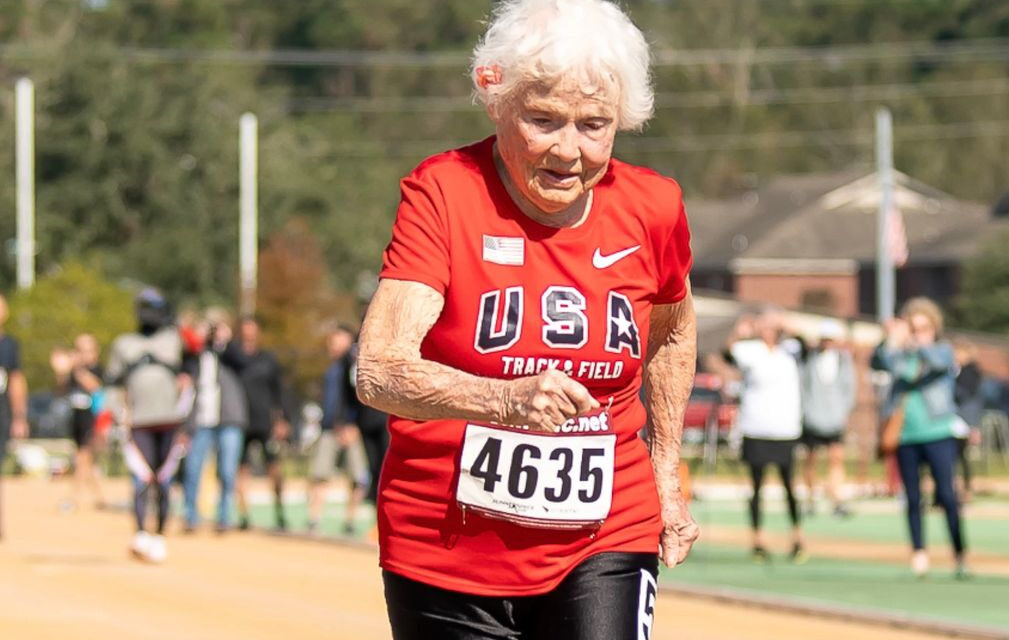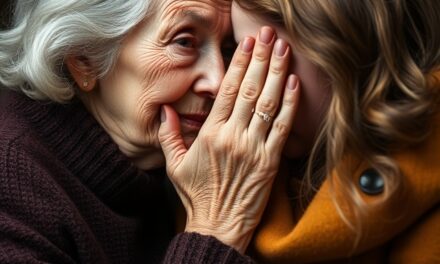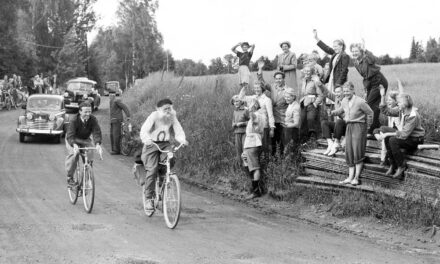For us familiar with supercentenarians and the ongoing demographic transition, living to 100 is no longer seen as being as extraordinary as it once was. Over the past century we have witnessed advances in healthcare, nutrition and lifestyle recommendations that allow people to become increasingly independent and thriving well into their second century. Still, the image that most people probably get when thinking of a centenarian is a frail person unable to care for themselves. While most people are frail by age 100, some resist the ravages of time well and can even flourish. For these people the question may not be for how long they can live but rather how well.
Over the past decades we have seen an increase in the number of masters athletes engaging in sports, sports that were in the past was mainly associated with youth and physical proficiency. Still, staying active as you age is a great way to boost your chances to live a healthier and longer life. Even so, most masters athletes taper off as they get into their 70s or 80s. Perhaps it’s a sore knee that’s been nagging you since you were young or maybe it’s the internalization of a prevailing societal stereotype that sport is for the young. It must also be understood that aging isn’t a uniform process, some people will, despite their best efforts, start to lose mobility and strength early while others don’t. Albeit that, some people keep on jogging as they pass 100. Of interest is that most centenarian athletes that I have heard of only really took up sports later in life, perhaps allowing them to avoid some accumulation of damage to their joints that lifetime athletes may have acquired.
At the heart of stories about centenarian athletes is the fact that sporting as a centenarian isn’t just about medals or records but rather a mindset and drive to keep active and excelling by challenging norms and preconceived beliefs of how a person should be at a certain age.
Take American Julia Hawkins, she made headlines for racing until she was 105 and lived until she was 108, having retired from athletics for her last few years. Hawkins has said that even old age should allow for magic moments and passions and provide something to look forward to and be ready for. Ilmari Kopponen is, to my knowledge, the oldest centenarian masters athletics participant of all-time, having competed in the shot put about two weeks after his 106th birthday earlier this year. He has said “If you don’t do anything, you get old faster.” There is probably something to that. Robert Marchand was up and racing on a bike well past age 105, only quitting biking on the road by age 108 due to hearing loss. Marchand managed to ride almost 23 km (14 miles) in an hour at age 106. He acknowledged that his ability to maintain this level of athleticism was due to having done sports for his entire life and leading a healthy lifestyle.
What’s interesting is that Marchand was closely followed by scientists, who observed his training and physical ability over the years and it was discovered that he actually managed to improve his test values between age 100 and 102, showing that (in his case at least) it was never too late to train harder to get better.
I have a background in public health and from this perspective, the rise of centenarian athletes can potentially have broader implications than simply feel-good stories reported on in the media. If more people embrace physical activity post-retirement and in their later years, we would be able to significantly reduce the burden of disease in the population and simultaneously strengthen the well-being for the population of the oldest-old. In order to accomplish this we must change public perception of exercise as being reserved for youth and middle-aged people by approaching physical activity as a lifelong practice that can help us keep going throughout our lives.
Centenarian athletes helps provide us with several important lessons. Seeing the rise of this group allows us to reconsider our own attitudes toward aging. If these people can continue to jump, throw and cycle beyond the age of 100, what is stopping the rest of us from doing so at age 65? 80? Their physical abilities help combat the myth that old age is a period of unavoidable physical decline. It also allows us to foster a culture that promotes being active at all ages, seeing maintaining physical activity as the main objective rather than finishing a race in sub-X minutes. Keeping our bodies in motion and adapting our type of exercise to our changing bodies helps us remain independent and healthy longer, improving both our own lives but also the quality of life for people in general.
Feature image is Julia Hawkins, a person who kept running well past age 100. Source: https://www.therunningweek.com/




